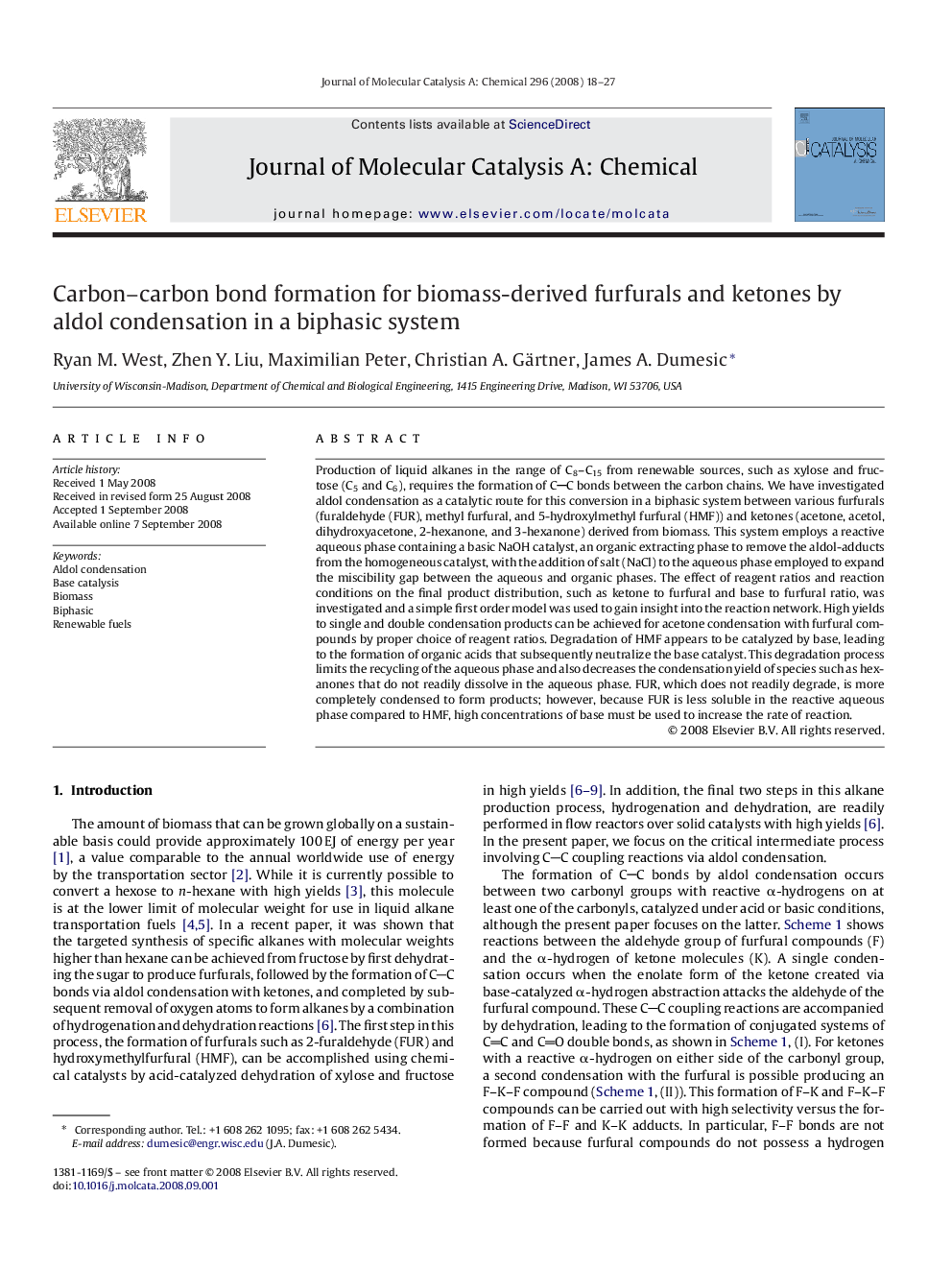| کد مقاله | کد نشریه | سال انتشار | مقاله انگلیسی | نسخه تمام متن |
|---|---|---|---|---|
| 67381 | 48480 | 2008 | 10 صفحه PDF | دانلود رایگان |

Production of liquid alkanes in the range of C8–C15 from renewable sources, such as xylose and fructose (C5 and C6), requires the formation of CC bonds between the carbon chains. We have investigated aldol condensation as a catalytic route for this conversion in a biphasic system between various furfurals (furaldehyde (FUR), methyl furfural, and 5-hydroxylmethyl furfural (HMF)) and ketones (acetone, acetol, dihydroxyacetone, 2-hexanone, and 3-hexanone) derived from biomass. This system employs a reactive aqueous phase containing a basic NaOH catalyst, an organic extracting phase to remove the aldol-adducts from the homogeneous catalyst, with the addition of salt (NaCl) to the aqueous phase employed to expand the miscibility gap between the aqueous and organic phases. The effect of reagent ratios and reaction conditions on the final product distribution, such as ketone to furfural and base to furfural ratio, was investigated and a simple first order model was used to gain insight into the reaction network. High yields to single and double condensation products can be achieved for acetone condensation with furfural compounds by proper choice of reagent ratios. Degradation of HMF appears to be catalyzed by base, leading to the formation of organic acids that subsequently neutralize the base catalyst. This degradation process limits the recycling of the aqueous phase and also decreases the condensation yield of species such as hexanones that do not readily dissolve in the aqueous phase. FUR, which does not readily degrade, is more completely condensed to form products; however, because FUR is less soluble in the reactive aqueous phase compared to HMF, high concentrations of base must be used to increase the rate of reaction.
Aldol condensation as a catalytic route for carbon–carbon bond coupling was investigated between various furfurals and ketones derived from biomass in a biphasic system. The effect of reagent ratios and reaction conditions on the final product distribution was investigated and a simple kinetic model was used to gain insight into the reaction network.Figure optionsDownload as PowerPoint slide
Journal: Journal of Molecular Catalysis A: Chemical - Volume 296, Issues 1–2, 10 December 2008, Pages 18–27